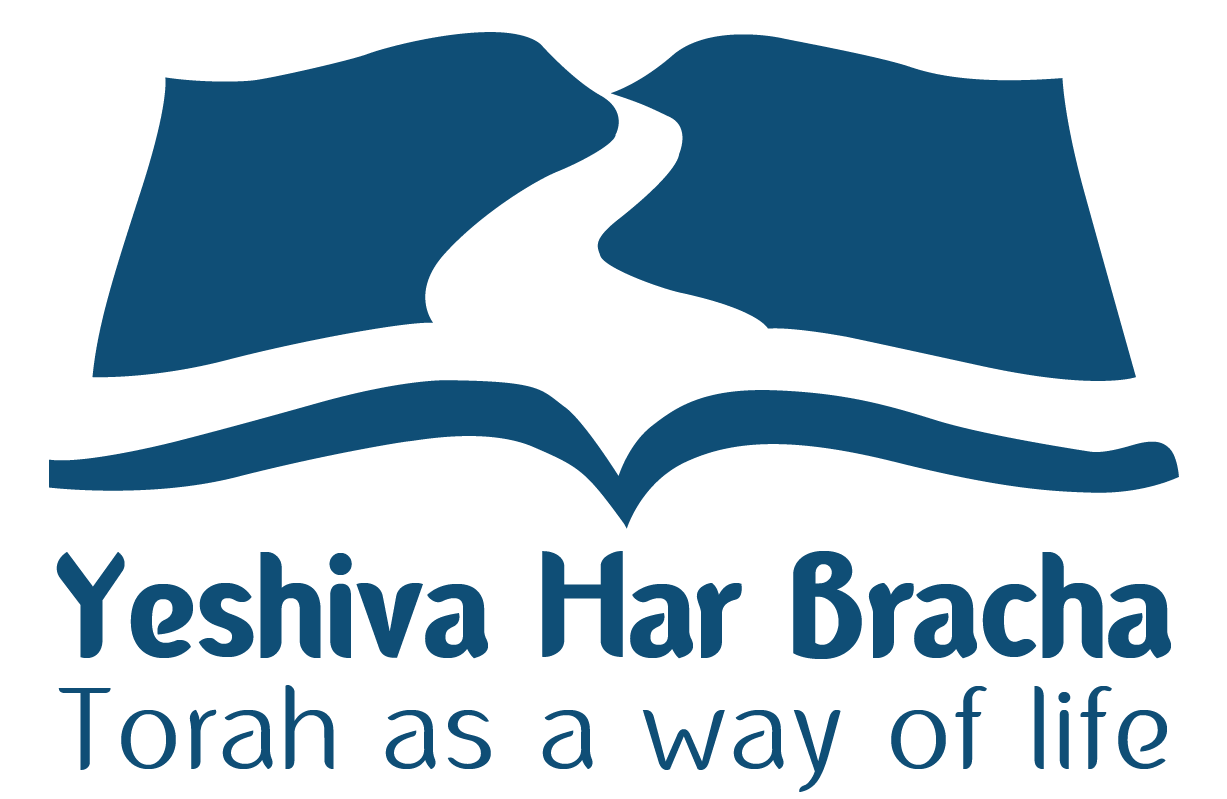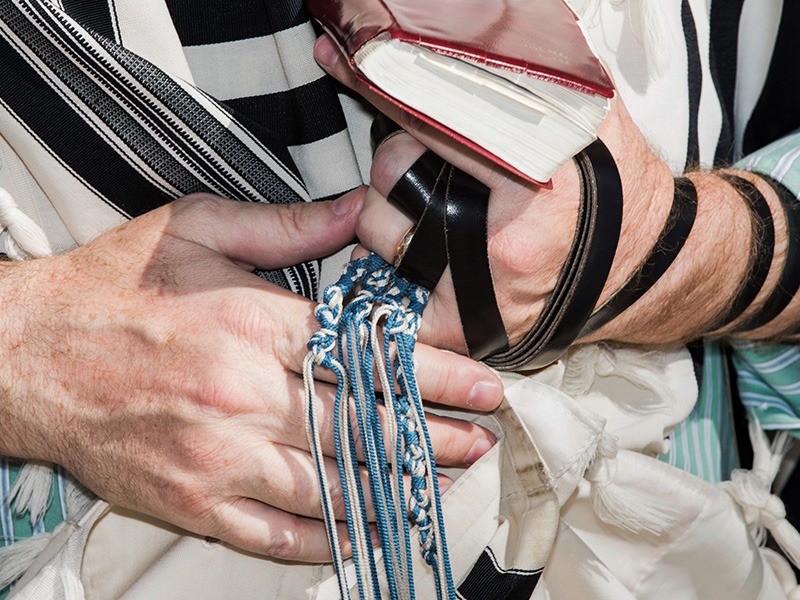There are those poskim who hold that since it has become clear that they produced the techelet from the spiny dye-murex, there is an obligation to dye techelet threads for tzitzit with it ● On the other hand, there are those who hold that there are great doubts about the identification of techelet, and therefore there is no commandment to place it in tzitzit ● Following the loss of the tradition of placing techelet in tzitzit, there are disputes and doubts that we have no possibility to resolve ● In practice, without an agreed ruling of the majority count and majority opinion of the Sages of Israel, there is no obligation to incorporate techelet threads in tzitzit ● However, since it appears that this is the techelet that our fathers used, there is virtue in placing techelet threads in tzitzit ● It is proper for one who is meticulous to place techelet that he emphasize that he is doing so without a vow
The Halakhic Debate
Two weeks ago, I presented in this column the evidence that has begun to accumulate in recent decades that the color techelet was produced from a chilazon (snail) that lives inside a shell called spiny dye-murex, (‘argamon keheh kotzim’ in Hebrew). This species was used in the past to produce purple dye (purple-reddish), and by exposing it to sunlight in the process of preparing the dye, it turns blue. On the other hand, I presented the doubts about the identification and about the exact color of techelet (dark blue, blue, techelet or purple). Despite the doubts, it appears that most likely, techelet was indeed produced from this snail.
Those Who Hold There is an Obligation to Place Techelet
There are those poskim (Jewish law arbiters) who hold that since it has become clear that they produced the techelet from the spiny dye-murex, there is an obligation to dye techelet threads for tzitzit with it. And in their opinion, even if the identification is not absolute, the obligation placed upon us is to act according to the best data we have, and consequently to place techelet from spiny dye-murex in tzitzit. In addition to this, even if we assume that the identification is in doubt, since this is a commandment from the Torah, in a state of doubt, one must be stringent, according to the law of doubtful Torah matters requiring stringency (safeka d’orita l’chumra).
Furthermore, there are those who hold that after techelet was revealed, all those who wear white threads are nullifying a Torah commandment, and it would be better for them not to wear a four-cornered garment (the Rebbe of Radzin ‘Ptil Techelet’ 5). In addition to this, there is no harm in placing this techelet, for even if it turns out that the identification of techelet is mistaken, since according to the letter of the law there is no prohibition to dye the white threads in various colors, at most, these techelet threads will be considered white threads that were dyed in various colors.
Those Who Hold That Any Lasting Techelet Fulfills the Requirement
Not only this, but according to Rabbi Yisrael Lipschitz (Tiferet Yisrael, Introduction to Seder Moed chapter 3), the commandment is not to place techelet that comes specifically from the blood of a particular snail, but the main thing is that there should be a lasting techelet color, and indeed in the past, the only way to produce it was through a particular snail, but according to the letter of the law, any lasting blue color is kosher for techelet of tzitzit. So also hold many poskim in the opinion of the Rambam, and Rabbi Herzog also inclined to this opinion (Techelet B’Yisrael, chapter 4).
Those Who Hold There is No Commandment to Place Techelet
On the other hand, there are those poskim who hold that there are great doubts about identifying techelet as produced from spiny dye-murex, and therefore, there is no commandment to place it in tzitzit. Furthermore, many hold that since all observance of Torah relies on tradition (masoret), once the tradition about techelet and the ways to test it was lost, even if many proofs are brought that techelet was found, there is no possibility to obligate its use. And this is not even considered a Torah doubt that one must be stringent about, for since for more than a thousand years it was established in Israel that techelet was lost, without renewal of the Sanhedrin or prophecy, it is not possible to restore the commandment to its former state (‘Shiurim l’Zecher Abba Mari’ in the name of the Brisker Rav). Therefore, only when we know with certainty what techelet is, or alternatively, the Sanhedrin decides that this is how the commandment should be fulfilled, will there be an obligation to place techelet in tzitzit.
The Discussions About Doubtful Torah Matters
The proponents that there is no obligation to place techelet further argued, because safeka d’orita l’chumra (“doubtful Torah matters require stringency”) exists only when we know with certainty how to fulfill the commandment, but we have doubt about a particular detail, but when the foundation of the obligation is in doubt and stems from lack of knowledge, we do not consider it doubtful Torah matters (according to Rashba and Beit Yosef Yoreh Deah 190).
They raised another argument, that we are stringent in doubtful Torah matters only in a case where if they are stringent, they will certainly fulfill the commandment, which is not the case here (Pri Megadim Orach Chaim 194, 3).
The response of those who obligate placing techelet is that doubt of knowledge is not considered doubt when one wants to be lenient through it, but for stringency, one must take into account even doubt of knowledge. And they further proved that even when it is doubtful if they will fulfill the commandment, in doubtful Torah matters, one must be stringent (the Rebbe of Radzin, ibid.).
However, these responses were not accepted by those who hold there is no obligation to place techelet, since the basic situation is that techelet was forgotten from Israel, so that the presumption (chazaka) is that we do not have techelet, and in order to uproot the presumption and re-establish the tradition of techelet, absolute claims without doubt are needed, as we find in many places in halakha, that we follow presumption as long as it is not uprooted. Similar to this wrote Rabbi Yehoshua of Kutno (Yeshuot Malko Orach Chaim 2-3).
The Doubts We Cannot Resolve
In addition to this, following the loss of tradition of placing techelet in tzitzit, there are disputes and doubts that we have no possibility to resolve: 1) How many techelet threads must be placed in tzitzit, whether four out of eight according to the Tosafot and most early authorities, or two according to the Raavad, or one according to the Rambam? 2) Is it permitted during the production of techelet to add to the snail’s blood additional substances to assist in absorbing the dye as is practiced? 3) What is the shade of techelet – dark blue, light blue, turquoise or even purple? And as long as there is no clear decision in these matters, there is no possibility to claim that there is an obligation to place techelet in tzitzit.
The Reasons for Opposition to Placing Techelet
Among those who hold there is no obligation to place techelet, not a few hold that one should refrain from placing techelet for several reasons: 1) Indeed, in principle, there is no prohibition to dye the white threads in various colors including techelet, but one must be careful not to establish among the Jewish people a doubtful identification of a commandment. 2) Those who wear techelet appear as arrogant toward the elder rabbis who do not practice this way. 3) One must be concerned for the opinion of those who hold that initially the color of the threads should be like the color of the garment, and it is forbidden to dye them in other colors, for this is the opinion of Rashi, Rambam, Raavad and others. Indeed, there are those who hold that even le’chatchila (optimally), one can dye the threads in any color, including SMaG, Maharam and Rashba.
The Concern That They Will Weaken in the Commandment of Tzitzit
There is another concern that today, thank God, a lot of people are meticulous to fulfill the commandment of tzitzit, and even display the tzitzit, and it reminds them of the commandments and preserves their identity. Thanks to the reduction in price of tzitzit, and placing them in dry-fit undershirts, many soldiers, including those who are not religious, wear tzitzit today. This was their practice even before the war. And if it is established that one must wear techelet, due to the high price of techelet (about 150 shekels according to Raavad, and about 250 according to Tosafot and most early authorities), many will stop wearing tzitzit and will lose this wonderful commandment that reminds of all the commandments.
Even if only the meticulous will use techelet, there is concern that among the general public that is accustomed to wear only white threads today, there will be people who will think there is no value in this, and will weaken in fulfilling the commandment of tzitzit in white, according to the prevalent custom. Similarly, there is concern that due to the high price of techelet, many children and youth, whose tzitzit sometimes tear, will stop wearing tzitzit. And in such a case, it is preferable that everyone always fulfill the commandment in white, rather than be meticulous sometimes with techelet.
The Obligation Depends on Agreement of Rabbis, and the Nation
In practice, according to what appears today, most likely the color techelet in tzitzit was produced from spiny dye-murex, however there is no certainty in this, and therefore, without an agreed ruling of the majority count and majority opinion of the sages of Israel, there is no obligation to incorporate techelet threads in tzitzit. This is because the Torah is maintained according to the instruction of the sages of Israel, and when the tradition of techelet was interrupted, it cannot be restored as an obligation, or even as a doubtful obligation, without the decision of the Sanhedrin, or agreement of the majority count and majority opinion of the sages of Israel.
The foundation of these matters is in the commandment to listen to the voice of the Great Court (Beit Din Ha’Gadol) that sat in the Chamber of Hewn Stone (Lishkat Ha’Gazit) (Deuteronomy 17, 8-11). And although afterward, in a gradual process, the authority of the sages weakened until the abolition of the Sanhedrin, the abolition of ordination, and the dispersion of the exiles, still the sages of Israel carry out the mission of the early authorities in continuing the tradition of Torah as required for the observance of Torah and commandments. And in place of the proper Sanhedrin, the sages accepted by Israel deliberate on matters, and over the years and generations, the halakha is established according to their instruction, and the nation’s acceptance (see Chinuch 496, and L’Nevochei HaDor 61. And similarly regarding ‘shluchuteyhu ka avadinan‘ (“we are doing their mission,”) Gittin 88b; Bava Kamma 84b; Shulchan Aruch Choshen Mishpat 1, 1; Rambam Laws of Sanhedrin 4, 11).
According to this foundation it was decided in practice, that the obligation is to put on tefillin of Rashi, and we do not concern ourselves with safeka d’orita (“doubtful Torah matters”) and obligate putting on tefillin of Rabbenu Tam. In other words, there was no decision on halakhic reasoning, but many practiced like the rabbis who ruled like Rashi and Rambam, until this became established halakha (Shulchan Aruch Orach Chaim 34, 1). Similarly, we practice regarding the separation of ma’aser sheni with a blessing according to the counting of years that were accepted in Israel, despite the fact that for hundreds of years, the matter was disputed.
Practical Summary: No Obligation, but There is Virtue
Therefore, as long as it has not been agreed upon by the great majority of the sages of Israel that there is an obligation to place techelet, there is no chiuv (halachic obligation) in this. However, since it appears that this is the techelet that our predecessors used, there is a ma’alah (virtue) in placing techelet threads in tzitzit. One should not fear arrogance, since tens of thousands already practice this way. If no challenge arises to the method of producing techelet from spiny dye-murex, the custom to wear this techelet will continue to spread, until it becomes a custom that is proper to observe. And if they continue to strengthen in it, it will become an obligatory custom in many communities, until gradually, according to the nation’s and its sages’ acceptance, this Torah commandment will return to be fulfilled with this techelet, and it will be a Torah obligation to incorporate it in tzitzit.
Limitations to the Virtue
However, one whose father or rabbi insists that he not wear techelet, it is preferable that he listen to him, and fulfill the Torah commandment to honor him in this, rather than be meticulous in placing techelet. In addition to this, it is proper for one who is meticulous to place techelet, that he emphasizes that he is doing so bli neder (without a vow), and it is also fitting that he sometimes wrap himself in a tallit with white tzitit. In this way he will not create a new obligation without the decision of sages, and the concern that there will be people who will weaken in fulfilling the commandment diminishes, for whenever it will be difficult to place techelet, they will willingly fulfill the commandment in white. For example, children and youth whose tzitzit tend to tear, will be able to wear white le’chatchila (optimally). And similarly, soldiers who need to frequently replace their tallit katan will be able to wear white le’chatchila.
This article appears in the ‘Besheva’ newspaper and was translated from Hebrew.








